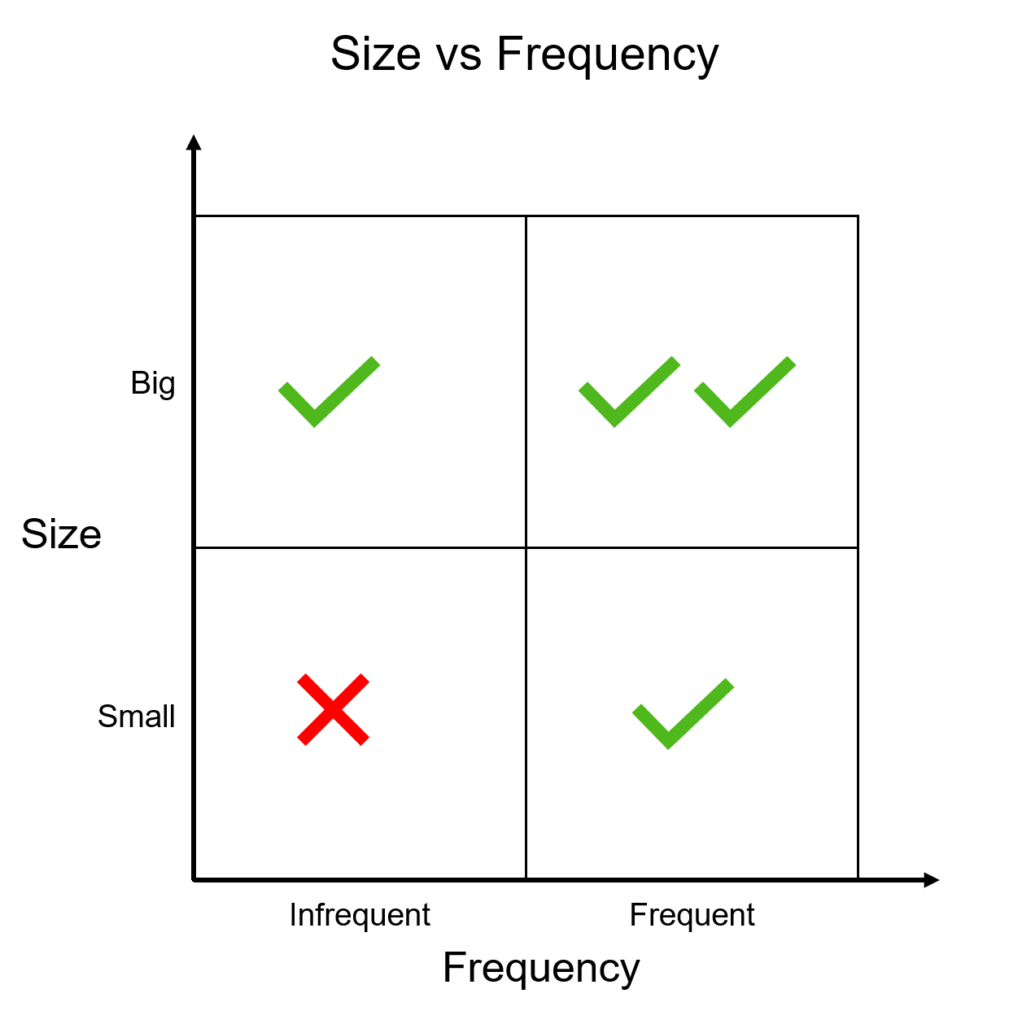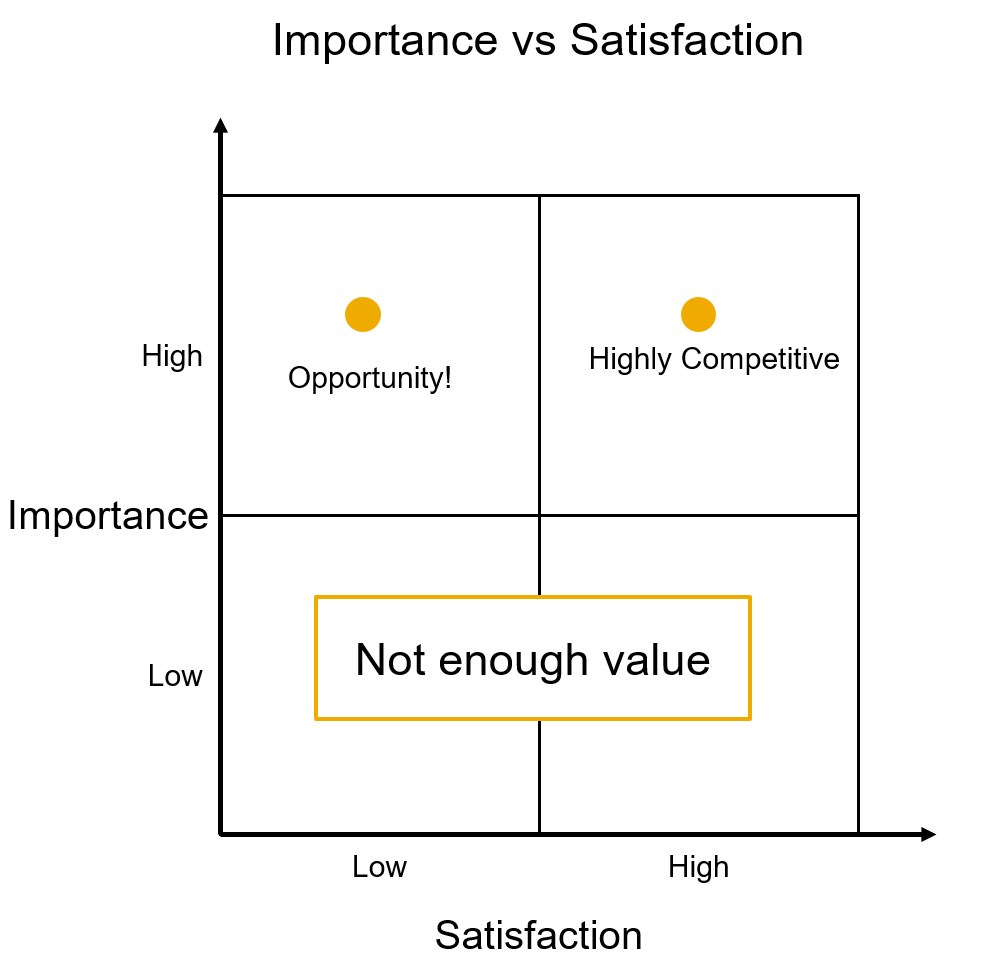If you are starting work on a new product or feature, where should you start? Idea or the Problem?
Before going any further, let me tell you this is a trick question. Both the answers are wrong. You should not start with the problem, and you should definitely not start with the idea. The best place to start with is the customer.
Most common starting point – Idea first
Most of the time people / product teams start with an idea. Typically it may start with someone saying, “Wouldn’t it be cool, if …?” and others chime in and before long you are all excited about building the next cool thing.
In this situation what you typically end up with is a solution, looking for a problem. This is typically a result of Inside out thinking.
Better starting point – Problem first
To avoid the idea-first approach, you may think that maybe you should start with a Problem. A genuine problem that people are trying to solve and would be willing to pay you for solving it.
This would definitely be a big step forward and you would be in a much better position for likelihood of success compared to most products/features that start with the “Idea-first” approach
But still there is a challenge! Many times, even when you end up solving a problem for the customer, you don’t see product adoption, or customer satisfaction improve. Why is that?
It would typically be because you ended up solving the wrong problem. Problem that was not significant enough for the customer.
As a Product Manager you may be doing your best and talking to customers and uncovering details, working with engineering and coming up with the best solution, but the adoption of features would still be lacking if the problem is not worth solving.
What you are missing is a Significant Problem.
How do you find a Significant Problem
Finding a Significant Problem requires you take a step back from “the problem” and look at the multitude of problems your customer faces.
There’s a few different approaches that you can take to evaluate which problems are worth solving
Size vs Frequency
Des Traynor (co-founder Intercom) talks about the idea of being in a Significant Problem space in his talk on Product Strategy. I do recommend you check it out here – https://www.youtube.com/watch?v=i-498BBUJJE.

He suggests that you need to ask two questions
- How big is the problem? Big, Small
- How frequently does your customer face it? Frequent, Infrequent
You don’t want to be solving “Small”, “Infrequent” problems and ideally you want to be solving “Big, Frequent” problems.
The product I manage – “Compensation Management” is solving Big and Infrequent problem. Managing merit, bonus, stock planning for your entire employee population is a Big problem, but it typically happens only once a year.
If you think about SAP SuccessFactors overall we solve the “Big, Frequent” problem of helping companies manage their employees.
Importance vs Satisfaction
Another approach that you can use to determine if the Problem is worth solving is based on Importance vs Satisfaction. This is what the Jobs-to-be-done approach uses and Dan Olsen also talks about in his Book – Lean Product Playbook.
As, you may have guessed, the two axis in this approach are Importance and Satisfaction

- You don’t want to touch the problems that are not Important, as you can’t create much value for customers there
- Ideally, you want to be solving a Problem that is High Importance and Low Satisfaction and that is where you have the highest likelihood of success.
Starting with the customer
The challenge of evaluating if a Problem is whether something is Important or not is that it can’t be done in isolation.
You can’t look at one problem and ask the customer if that is the most important problem for them. It’s like asking your customer – “Would you like this feature?”, then answer invariably would be “Yes, of course”.
When you have already identified a problem to solve and are focused on it, you are being subject to Focusing Illusion. As Daniel Kahneman puts it –
“Nothing in life is as important as you think it is while you are thinking about it.”
To find problems that are really important for customers and where the satisfaction levels are low, you need to take a step back and think about all the problems that your customer has, which you have the capability of solving.
Get the feedback from a large number of customers, and then try to stack-rank the list of problems that the customer is facing, and pick which one you would like to attack first.
Jobs-to-be-done provides a formula for calculating the Opportunity Score which is –
Opportunity Score = Importance + (Importance – Satisfaction)
Benefits of starting customer first
Deep understanding of your target customer is critical, because your business is not about your product or service.
It is also not about the problem, especially in the long run. In the long run, your customer won’t necessarily face the same problem
It is all about the customer. You are in business because you have a customer.
Acquiring new customers is hard. The cost of acquisition is typically 5-6 times more than the cost of retaining a customer.
If you have done all the hard work of Acquiring the customer, it’ll be a criminal waste to let them go once they have solved their problem. It is much easier to sell something to a customer, who already purchased from you. If you build a deep understanding of all the problems your customer is facing, that not only gives you a better chance of solving that one problem, but also opportunities to expand the product footprint into other areas in future.
Once you have solved one problem for the customer, you can then go to solving another problem, from the list you already generated. This helps you in increasing the Customer’s lifetime value
- Amazon started by selling Books. Now they sell pretty much everything under the sun.
- SuccessFactors started by selling Performance Management. Now we have a full suite of HXM solutions.
So in summary, don’t start with the idea, don’t start with the problem. Start with the customer. If you are working as a Product Manager, I assume your company has already identified a customer. If you are thinking about starting a new venture and haven’t identified a customer today, I’ll discuss how to choose the right customer in a future post.
Where do you start your feature development today? Idea-first, Problem-first or Customer-first? Leave a comment.